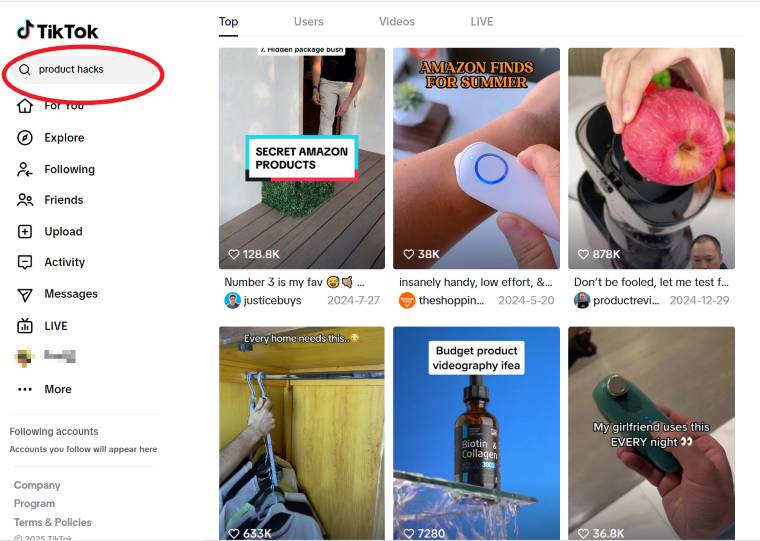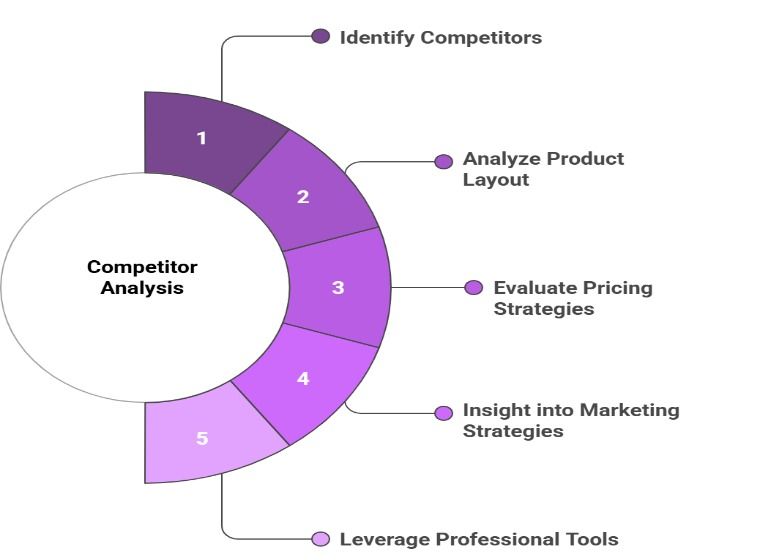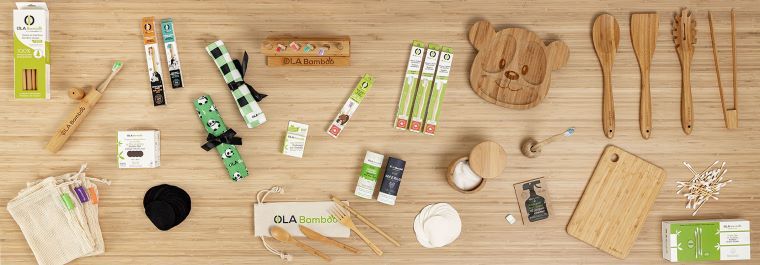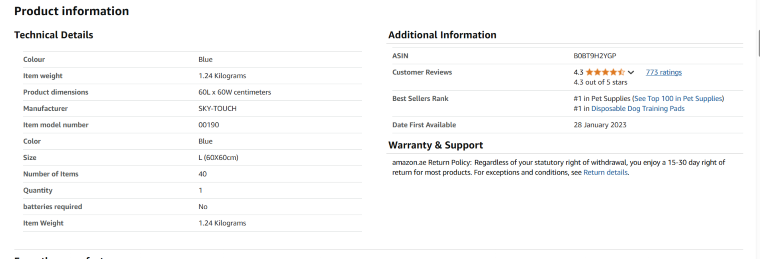High Demand Products with Low Competition in Dropshipping

Finding high-demand products with low competition is the key to a successful dropshipping business. Many entrepreneurs struggle with saturated markets, making it difficult to stand out and generate consistent sales.
In this guide, we’ll explore how to identify winning products, analyze market demand, and leverage optimization strategies to maximize your profits. Whether you're a beginner or an experienced seller, these insights will help you stay ahead of the competition.
How to Spot High Demand Products with Low Competition
Selling success starts with finding the right product-high demand with low competition. This part reveals proven strategies to spot profitable niches, analyze trends, and outsmart competitors. Discover hidden opportunities and scale faster!

|
Find Better Supplier For Products DSers Supplier Optimizer - One click to filter out the most proper suppliers for your products |
1. Analyze Market Trends
The initial stride in uncovering high demand with low competition products lies in analyzing market trends, and tools like Google Trends are indispensable assets in this endeavor. Meanwhile, social media platforms such as Instagram, TikTok, and Pinterest serve as vibrant hubs for emerging trends. Hashtags, viral videos, and influencer-generated content on these platforms offer invaluable glimpses into the current interests of consumers.
Google Trends
Google Trends stands as a powerful ally for discerning market trends. By inputting relevant product-related keywords, you can access historical and real-time data on search volumes. This data is presented in an easy-to-understand graph, allowing you to identify patterns such as seasonal fluctuations or long-term growth trends.

For instance, if you're exploring the fitness niche, you can track the search popularity of terms like “home workout equipment” over time, helping you anticipate demand surges and make informed product decisions.
Instagram’s visual nature makes it ideal for spotting emerging trends—explore trending hashtags related to your niche. For example, if you're considering entering the fashion industry, search for hashtags like #fashiontrends, #ootd (outfit of the day), or niche-specific tags such as #sustainablefashion.
Analyze the posts associated with these hashtags, paying attention to the types of products that are being featured, the styles that are gaining traction, and the brands that are generating buzz. Additionally, follow influencers in your niche, as their posts and stories can showcase emerging products and consumer preferences.
TikTok
TikTok is known for its viral content and rapid-fire trend cycles. Use the search function to look for product-related keywords or trending challenges. For example, search for "product hacks" or "must-have products" to discover items that are capturing users' attention.

Watch viral videos closely to understand why certain products are going viral. It could be due to their unique features, affordability, or entertainment value. Engage with the TikTok community by liking, commenting on, and sharing relevant videos, which can also give you insights into the audience's reactions and preferences.
Pinterest is a treasure trove for trend discovery, especially for products related to home decor, DIY projects, fashion, and beauty. Enter product-related keywords into the search bar and explore the resulting pins. Notice the styles, colors, and themes that are popular among users.

Pins with high engagement, such as a large number of saves and likes, often indicate products or ideas that are in high demand. You can also follow boards dedicated to your target niches to stay updated on the latest trends and inspiration.
2. Leverage Niche Markets
To identify niche markets, look for gaps in the market that aren't being fully served by existing competitors. You can use keyword research tools to find long-tail keywords related to your broader niche. These long-tail keywords will often lead you to more specialized products with less competition.
Identifying and leveraging niche markets is a cornerstone for dropshippers aiming to offer high demand products with low competition. Here's a detailed walk-through of the process:

Self-Assessment: Passion Meets Proficiency
Begin by introspecting your passions, skills, and experiences. This internal exploration can unearth areas where you have a natural edge.
- Avid Birdwatchers + Bird-Watching Gear
- Fitness Enthusiasts + Functional Fitness Equipment for Home Gyms
- Plant Lovers + Specialty Indoor Plant Accessories
Market Scouting: Hunting for Gaps
- Leverage Google Keyword Planner to uncover valuable long-tail keywords and untapped search opportunities.
- SEMrush: It offers comprehensive keyword data, including search volume, keyword difficulty, and competitor analysis.
Social Media and Online Communities
- Facebook Groups: Numerous niche groups like “Urban Rooftop Gardeners" or "Cacti and Succulent Enthusiasts” in gardening exist. Joining them helps observe member conversations about desired products, hobby issues, and trends.
- Reddit: Subreddits cover various topics. In the beauty niche, r/CleanBeauty focuses on chemical-free products, with discussions on shortages like effective natural deodorants, and a chance for dropshippers.
3. Conduct Competitor Analysis
Competitor analysis is essential in dropshipping—studying their products, pricing, and promotions reveals gaps in the market.

Identify Competitors
Lock in competitors by conducting Google searches with core keywords (such as "online stores for fitness apparel"); look for sellers of similar products on e-commerce platforms like Shopify and Amazon; use relevant hashtag topics (such as #fitnessapparel) on social media platforms like Instagram to locate competitor accounts.
Analyze Product Layout
Sort out the product categories, brand collaborations, and category richness of competitors, and look for areas where products are missing (such as plus-size trendy fitness apparel); study product descriptions and user reviews to uncover functional shortcomings and quality issues of competitors, and determine the direction for product optimization.
Evaluate Pricing Strategies
Compare the prices of similar products using spreadsheets to determine whether competitors adopt a high-end premium or affordable pricing strategy; pay attention to promotional methods such as limited-time discounts and combo packages, and analyze their impact on users' purchasing decisions.
Insight into Marketing Strategies
Track the content forms (images/videos), posting frequencies, and interaction data of competitors on platforms like Instagram and TikTok, and learn from high-interaction content forms; subscribe to competitors' emails, and analyze the push rhythms, content types, and design styles; study the topic directions and update frequencies of competitors' blogs to fill the gaps in popular content that they haven't covered.
Leverage Professional Tools
Use SEMrush to query the keyword rankings of competitors and lock in high-traffic and low-difficulty keywords; analyze the sources of backlinks of competitors through Ahrefs to find potential cooperation resources; and utilize the traffic and content analysis functions of these two tools to accurately locate market opportunities and breakthrough points in competition.
5 Top High Demand and Low Competition Products
Navigating the dropshipping market can be challenging, but the key to success lies in identifying products that combine high demand with low competition. After extensive research and analysis, we've pinpointed five product categories that offer excellent opportunities for dropshippers. These categories not only align with current consumer trends but also present untapped potential for growth.
1. Sustainable and Eco-Friendly Products
With the increasing global focus on environmental sustainability, the demand for eco-friendly products is skyrocketing. Eco-conscious shoppers increasingly favor sustainable, biodegradable, and low-impact products.

Items like reusable water bottles made from bamboo, organic cotton tote bags, and solar-powered chargers fall into this category. While there are some players in the market, the demand is still far from being fully met, making it a great opportunity for dropshippers.
2. Health and Wellness Supplements
The health and wellness industry continues to grow, and supplements are a significant part of it. Products such as collagen powders for skin health, probiotics for gut health, and omega-3 fatty acid supplements for heart health are in high demand.

As more people become health-conscious and look for ways to improve their well-being, the market for these supplements is expanding. Many dropshippers haven't yet tapped into this niche, leaving room for new entrants to capture a share of the market.
3. Pet Specialty Items
As pet owners increasingly treat their furry friends as family members, the demand for specialty pet items is on the rise.

This includes things like custom-made pet beds, personalized pet tags, and unique pet toys. While there are general pet supply stores, the market for more specialized and high-quality pet products is still relatively untapped in the dropshipping space.
4. Home Office Accessories
The shift towards remote work has led to a surge in demand for home office accessories. Ergonomic desk chairs, cable organizers, and standing desks are just a few examples of products that people are looking for to create a comfortable and productive home workspace.

Many dropshipping businesses have yet to fully explore this niche, making it a prime area for finding high demand with low competition products.
5. Tech Gadget Accessories
The technology industry is constantly evolving, and with the increasing use of smartphones, tablets, and laptops, the demand for tech gadget accessories is endless.

Products like wireless charging pads, unique phone cases, and screen protectors are always in demand. While there are many sellers, there's still room to differentiate by offering innovative or niche-specific accessories.
Optimization Tactics to Maximize Your Dropshipping Revenue
To truly thrive in the competitive dropshipping landscape and maximize your revenue, it's essential to implement a comprehensive set of optimization tactics. These strategies work in tandem, from attracting customers to your products with compelling listings to enticing them to make a purchase and encouraging repeat business. Maximize your dropshipping success by fine-tuning every element of your business strategy.
1. Optimize Your Product Listings
Use high-quality images, detailed product descriptions, and relevant keywords to make your listings stand out. A good product description should not only describe the features of the product but also highlight the benefits to the customer. For example, instead of just saying a water bottle is made of stainless steel, mention how it keeps drinks cold for up to 24 hours, making it perfect for outdoor activities.

Boost visibility by strategically placing relevant keywords in titles, descriptions, and tags. These keywords should be the terms that potential customers are likely to search for when looking for products like yours. Tools like Google Keyword Planner can help you identify the most effective keywords.
2. Price Your Products Strategically
Pricing is a delicate balance. Research your competitors' prices and set yours competitively. However, don't be afraid to add value to justify a slightly higher price. You could offer free shipping, a money-back guarantee, or additional product features.

|
Adapt Your Product Prices Automatically DSers Automatic Pricing - Pre-set Pricing Rule to mark-up your product price automatically |
Consider implementing dynamic pricing strategies. For example, during peak seasons or for limited-time offers, you could adjust your prices to maximize profits. You can also offer discounts and promotions to attract new customers and encourage repeat purchases.
3. Market Your Products Effectively
Harness the power of social media to promote your dropshipping products effectively. Create engaging content on platforms like Instagram, Facebook, and TikTok to promote your products. Share user-generated content, product reviews, and behind-the-scenes looks at your business. Run targeted ads on these platforms to reach your ideal customers.
Keep customers engaged and drive repeat sales through targeted email campaigns. Build an email list and send out regular newsletters with product updates, promotions, and useful content. You can also use email marketing to re-engage with customers who have abandoned their shopping carts.
Influencer marketing can also be a great way to promote your products. Partner with influencers in your niche who have a large and engaged following. They can help you reach a wider audience and build trust with potential customers.
Conclusion
The secret to a thriving dropshipping business lies in identifying trending yet underserved products. By analyzing market trends, leveraging niche markets, and conducting thorough competitor analysis, you can identify products with great potential.
Once you've found these products, optimize your product listings, price your products strategically, and market them effectively to maximize your revenue. The dropshipping landscape is constantly changing, but by staying informed and adapting your strategies, you can stay ahead of the competition and achieve long-term success.











 Company
Company
 Why Choose DSers
Why Choose DSers
 Blog
Blog
 Help Center
Help Center




 Live Chat
Live Chat